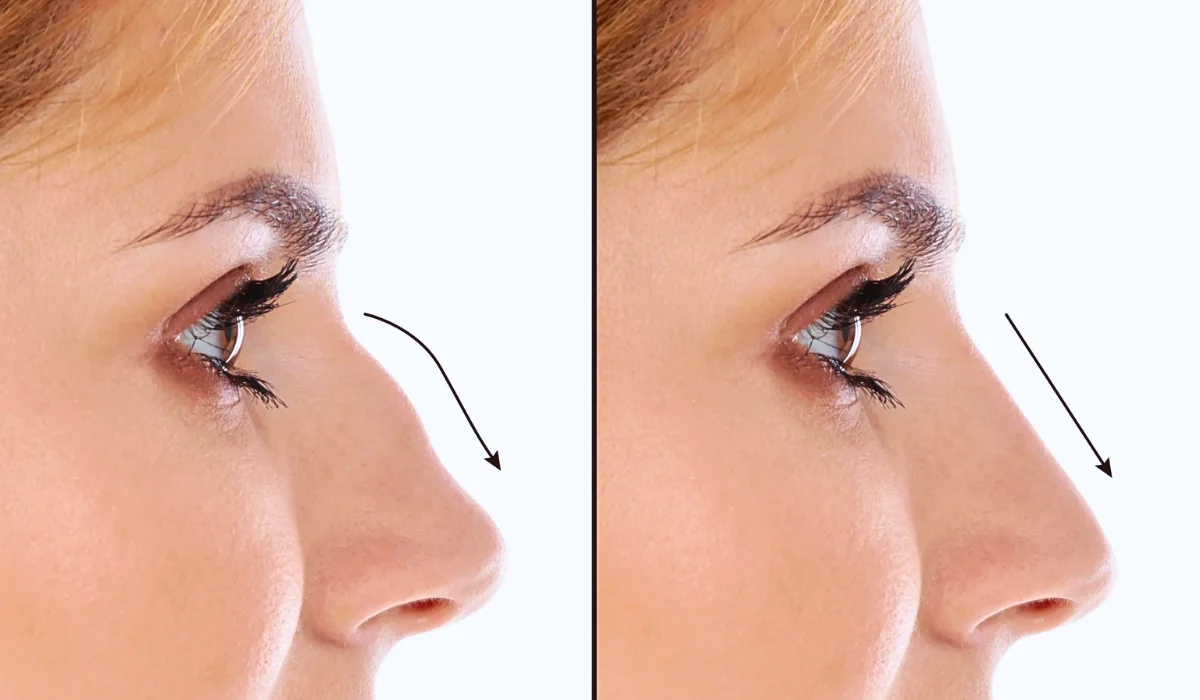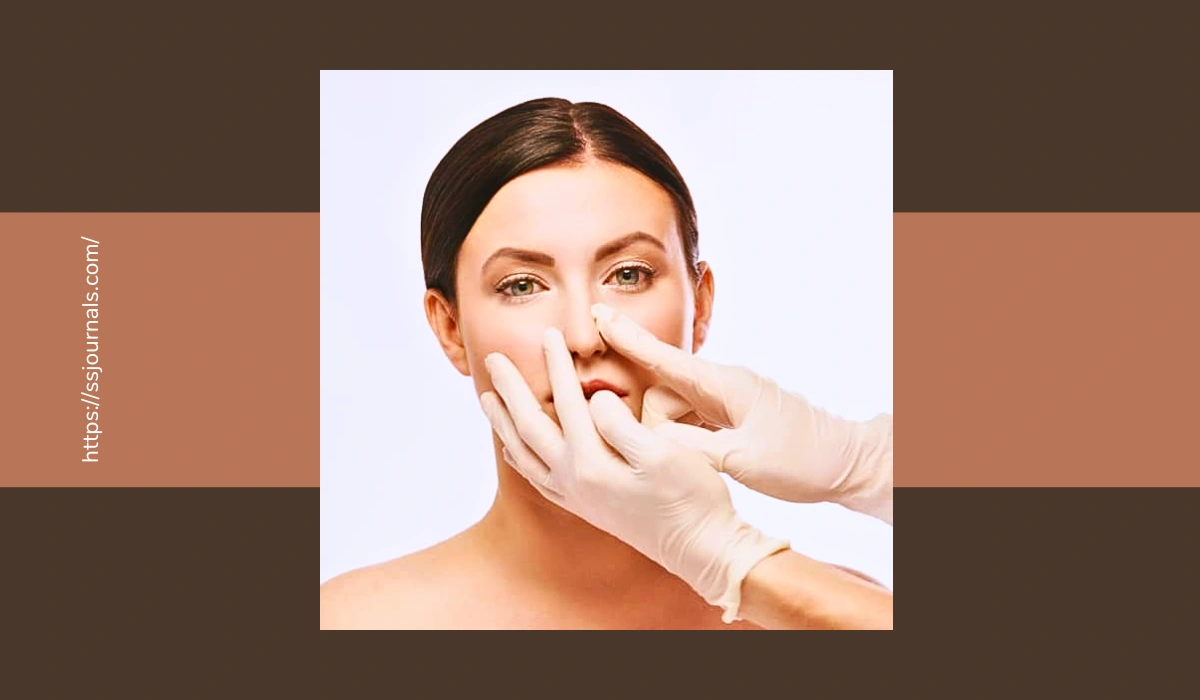Septorhinoplasty, sometimes referred to simply as nose surgery, is a plastic surgery procedure done to reshape the nose by altering the cartilage and bone. It is usually done for cosmetic reasons, to change the appearance of the nose, but can also be performed to improve breathing and function. Septorhinoplasty is one of the most common facial plastic surgery procedures performed today.
During septorhinoplasty, an incision is made to access the cartilage and bone inside the nose. The facial plastic surgeon then reshapes or augments these structures as needed. For example, the surgeon may shave down a hump on the bridge of the nose or build up a flat or depressed area using cartilage grafts harvested from elsewhere in the nose or even the ear.
Septoplasty refers specifically to the portion of the surgery focused on straightening the septum, which is the wall of cartilage and bone that separates the nostrils. A deviated septum can obstruct airflow and make breathing difficult, so septoplasty straightens it to improve respiration.
Septoplasty recovery can take one to two weeks. There will be some bruising and swelling that progressively improves during the first week or two after nose surgery. Most people return to work within seven to ten days after the procedure.
In the long run, patients can enjoy an improved facial appearance and enhanced breathing through the nose thanks to the septorhinoplasty procedure.
Septorhinoplasty Candidates

Who is a good candidate for septorhinoplasty? Two main types of patients pursue this procedure:
- Those seeking cosmetic improvement of the nose for aesthetic reasons
- Those with functional issues like breathing problems due to septal deviation or other anatomical causes
The first category includes people unhappy with the size, shape, or proportions of their noses and seeking refinement through plastic surgery.
These cosmetic septorhinoplasty patients want to enhance their appearance through procedures like narrowing or refining the nasal tip, removing a dorsal hump, or improving nasal symmetry.
Teens and adults alike pursue nose surgery to align the look of their nose with their other facial features. A facial plastic surgeon can use various techniques to reshape the structure of the nose and achieve the patient’s aesthetic goals.
The second group of septorhinoplasty candidates includes patients with functional problems like difficult nasal breathing. A deviated nasal septum—when the wall of cartilage and bone between the nostrils is crooked—can obstruct airflow and make it hard to breathe through the nose.
The septoplasty portion of septorhinoplasty surgery straightens the septum to open nasal passages and enhance breathing. Sleep apnea patients may also pursue nose surgery if anatomical irregularities are contributing to airway obstruction.
Septorhinoplasty Consultation
Patients considering septorhinoplasty will meet with a facial plastic surgeon for an initial consultation. The surgeon will examine the nose both externally and internally using a speculum and headlight.
They will assess the appearance, structure, anatomy, and function of the nose to understand the patient’s concerns and determine if they are a good candidate for surgery. The doctor will explain surgical options to help meet the goals whether cosmetic, functional, or both.
Patients must share their full medical history at the consultation as certain conditions may impact surgery or recovery. Bring a list of current medications as well. Also, convey realistic expectations about results; while nose surgery can greatly improve appearance and function, discuss outcome goals that align with anatomy.
How Is Septorhinoplasty Performed?
Septorhinoplasty uses small incisions inside the nose to allow the surgeon access to reshape or augment underlying cartilage and bone structure.
Most septorhinoplasty procedures take place on an outpatient basis under general anesthesia or IV sedation with local anesthesia. The surgery typically takes one to two hours.
Here is an overview of the septorhinoplasty procedure:
First, the surgeon will make incisions inside the nostrils. Open rhinoplasty uses an additional small external incision on the columella—the strip of tissue between the nostrils.
This allows for more direct access in complex reconstructions but leads to more visible scarring. Most cosmetic procedures utilize closed rhinoplasty without this columella incision.
Through the incisions, the surgeon can visualize and access the lower lateral, midvault, and upper lateral cartilages that give the nose structure and shape. They may trim, suture, reshape, or augment these cartilages with grafting material to alter external features according to the patient’s goals.
Common structural changes include narrowing the bridge, refining the nasal tip, removing a dorsal hump, and improving symmetry.
If a septoplasty is required for airway improvement, the deviated septum is straightened at this stage. The surgeon trims and repositions the cartilage bone of the septum within the nose to open the nasal passages for easier breathing.
Septoplasty is commonly paired with turbinate reduction—surgery to decrease the size of structures along the nasal passages prone to swelling—for even greater airway enhancement.
At the end of septorhinoplasty surgery, the incisions are closed with sutures designed to limit scarring. Splints, packing, and bandages may provide protection and support during initial healing.
Also Read: Pimple Inside Nose: Natural Remedies
Conclusion
Recovery from septorhinoplasty brings progressive improvement in swelling and bruising during the first weeks after surgery. The facial plastic surgeon will provide detailed postsurgical care instructions specific to your procedure.
Follow all directions for medications, activity restrictions, nasal irrigation, and follow-up appointments during recovery.
Initially after surgery, the face may appear swollen and the nose somewhat obstructed by bandages. Bruising around the eyes is common as well. Ice packs help minimize swelling and discomfort during early healing.
Over days to weeks, swelling and bruising gradually fade to reveal refined nasal contours and enhanced breathing thanks to septorhinoplasty techniques. Nose appearance continues improving for up to a year as tissues fully heal.
While the majority of septorhinoplasty patients achieve their goals, be aware that revision surgery is sometimes necessary to address complications or suboptimal results. Make sure you understand potential risks before undergoing nose surgery.
In the long term, the results of successful septorhinoplasty are highly satisfying both esthetically and functionally. Patients enjoy improved facial harmony, more attractive nose size and shape, as well as easier nasal breathing.
These enhancements boost self-confidence for work, school, relationships, and an overall improved quality of life thanks to this life-changing procedure.
What changes could septorhinoplasty bring to your life? If you are considering nose surgery, schedule consultations with highly qualified facial plastic surgeons to discuss your options.

